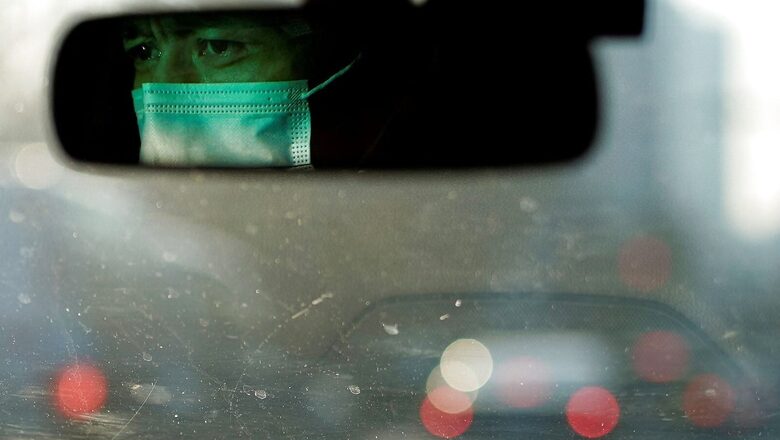
views
India’s Covid-19 cases, amid the emergence of the highly-transmissible Omicron variant, are shooting up unprecedentedly. The country saw an almost three-fold weekly rise of coronavirus cases till Sunday, being pegged as one of the worst jumps, not seen in even the second wave.
State governments are responding with increasing Covid-19 curbs, while people are urged to diligently follow pandemic protocol such as mask-wearing, physical distancing, and avoiding big social gatherings. The redux has come many times before as the world as completed almost two years since the pandemic first emerged, bringing with it rising and ebbing waves of the infection, vaccination drive revivals and newer, sometimes worse than before, variants.
In such a case, pandemic fatigue, and subsequently pandemic burnout, is very likely to set in among people. Pandemic fatigue is the state of being worn out by recommended precautions and restrictions related to a pandemic, often due to the length of the restrictions and lack of activities to engage in, resulting in boredom, depression, psychic numbing, and other issues, causing one to abandon these precautions and risk contracting the disease, reports state.
How Does Pandemic Fatigue Contribute to Case Rise?
Visuals of people not following pandemic protocol, celebrating New Year were reported across news portals in India. One of the reasons may be attributed to pandemic fatigue, and experts say, that coupled with other factors, this could lead to an increase in the number of cases.
As the Omicron variant has emerged, much focus has been put on its comparatively lower rate of hospitalisation and lethal form of illness. However, experts, including India’s Union Health Minister Mansukh Mandaviya, have warned that the infectious nature of the variant, which first was reported from South Africa, could overwhelm the medical system. States and UTs have been instructed to fast ramp-up their medical infrastructure, to ‘escape an Omicron wave unscathed’.
When India suffered a devastating second wave of Covid-19 in April and May last year, masking and other Covid compliances were seen being followed diligently. However, these figures decreased over the coming months, as cases declined and vaccination figures vastly improved. But the emergence of the Omicron variant has spurred cases again, and authorities are instructing people to get back into their ‘Covid armour’.
Symptoms of Pandemic Fatigue
According to a report by Piedmont, infectious disease physician Gweneth Francis has described these as symptoms of pandemic fatigue:
‣ A decline in compliance with mask-wearing and social distancing
‣ Having anxiety if you even briefly pass by someone who isn’t wearing a mask
‣ Feeling tired even after getting enough sleep
‣ Lack of motivation or feeling like you don’t have a sense of purpose
‣ Snapping at loved ones
‣ Feeling depressed and isolated
Stop ‘Doomscrolling’, Say Experts On Combating the Fatigue
A report by UCHealth states that limiting the amount of time you spend on your device is one of the most important ways to deal with pandemic fatigue. According to Justin Ross, a psychologist who studies the effects of pandemic fatigue, “doomscrolling, or intentionally tuning in to negative stories on TV or social media, fuels increased dread, uncertainty, anxiety, and fatigue.”
Being active was another method he discovered to be extremely beneficial in his studies. “If you prioritise movement, you will find a way to make it happen. Making time to exercise and meditate a priority in your schedule and protecting that time will make a significant difference in your mental health “.. Meditation and taking time to reflect are two other methods of coping.
You Can Also Create Your Own Covid Bubble
Gweneth Francis states that in case you’re feeling lonely or isolated, a “COVID bubble” with a group of like-minded family members or friends who take similar precautions may be helpful. A bubble, also known as a “social pod” or “quaranteam,” can be a safer way to socialise with people outside of your immediate household.
“You can plan events with people in your bubble to help you socialise and keep your mental health in check,” she says. “Some people live in bubbles where they trust one another and don’t wear masks. Others continue to wear masks when they go to see people in their bubble. My bubble consists of grandparents and a single group of friends. We always wear masks to playdates with our group of friends. But this way, my son will be able to interact with others.”
Seek Mental Health Help
“Mental health has been suffering, and it’s partly because of the loss of social connection, but it also stinks to be inside all the time, and it makes sense that COVID fatigue is setting in,” MD Anna Yap explains in an article in AMA. “This is a completely normal reaction, so if you need to seek mental health care resources, do so as well.”
Maintain Hope
“You’re tired in your soul—emotionally, psychologically, socially, spiritually, you’re just tired and unmotivated,” said Dr. Carl Lambert, MD says in the AMA report. To get out of that rut, keep hoping that things will improve, the expert says.
“That feeds into what’s going on right now with the vaccine and all these other avenues that are providing hope,” he explained. “If there’s anything you can do to keep hope alive, that’s the way to go.”
…And Also a Schedule
According to Dr Yap, “COVID fatigue can you feel like a dog that’s just paddling in the pool, not really knowing where you’re going.”
“When you lose those routines in life, you lose a lot of your momentum and the feeling that you’re growing.”
“As humans, we like to have something we’re moving towards and when we don’t even know when the end point of something is, how can we move towards it?” she said, adding that one way is to change from pajamas into clothes or move from the bedroom to the living room to “help you feel like you have some sort of change that you’re experiencing throughout the day.”
Read all the Latest India News here



















Comments
0 comment